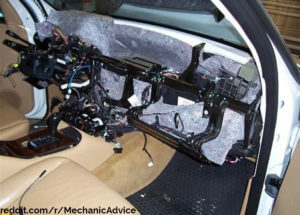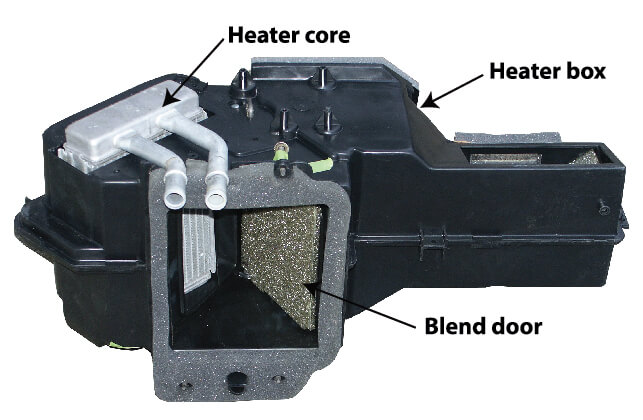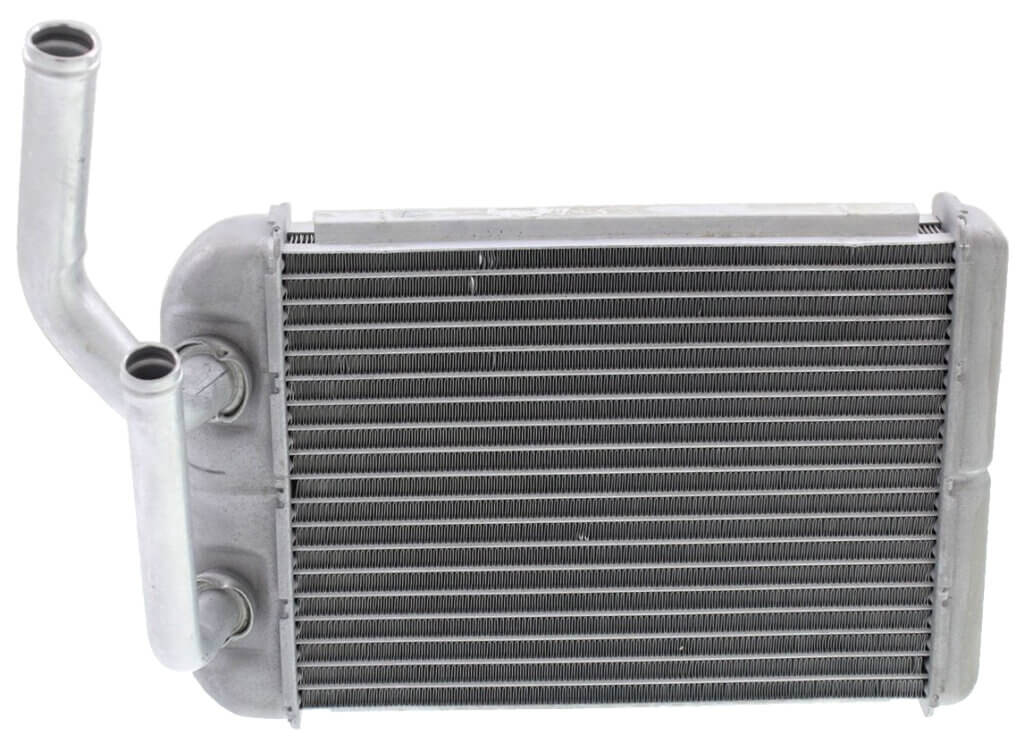Heater core replacement cost
Heater core replacement cost in U.S.
If you’ve gotten a heater core replacement cost estimate from a shop, chances are you’re still recovering from sock of the estimate. That’s because the typical heater core replacement cost can be upwards of $1,500. I’ll explain what’s involved in the job so you understand why the cost is so high, and in the process, you can determine whether you think you can replace a heater core yourself, especially since heater core cost is only around $150. But first, let’s talk about how your car’s heater core works, what causes it to fail, how a heater core flush might solve your problem without actually having to replace the entire unit and whether heater core sealants work.
See this article to learn more about what a heater does
See this article to learn what causes a heater core to fail
How to replace a heater core
Replacing a heater core in most late model cars is a huge job that often involves evacuating car’s air conditioning refrigerant and removing the entire dash and console. Here are the typical steps involved so you can see why heater core replacement cost is so high
Heater core replacement requires dash removal

Start by remove the instrument panel. Removing the instrument panel takes almost 6 hours and involves 36 steps on a Ford Taurus. That step alone makes up the bulk of the heater core replacement cost for labor.
1. Rotate the steering wheel until the front wheels are in the straight-ahead position.
2. Drain the coolant.
3. Recover the refrigerant.
4. Remove the wiper mounting arm and pivot shaft assembly.
5. Remove the 2 LH instrument panel upper cowl bolts.
6. Remove the PCM.
7. Remove the wire harness retainer from the PCM bracket stud.
8. Remove the 3 nuts and the PCM bracket.
9. Remove the RH instrument panel upper cowl bolt.
10. Remove the upper engine cover.
11. Remove the vacuum hose clips from the strut tower cross brace.
12. Remove the strut tower cross brace.
13. Remove the heater hoses from the heater core.
14. Remove the Thermostatic Expansion Valve (TXV) manifold nut and the TXV manifold.
15. Remove the steering wheel.
16. Remove the front seats.
17. Remove the floor console.
18. Remove the LH and RH A-pillar trim panels.
19. Remove the LH and RH scuff plate trim panels.
20. Position aside the LH and RH door opening weather-strips.
21. Remove the LH and RH instrument panel side finish panels.
22. Remove and discard the steering column shaft-to-steering column bolt.
23. Separate the steering column shaft from the steering column.
24. Disconnect the instrument panel upper LH bulkhead electrical connector.
25. Disconnect the 2 Smart Junction Box (SJB) lower electrical connectors and instrument panel lower LH bulkhead electrical connector.
26. Remove the hood release handle bolt and position the hood release handle aside.
27. Remove the driver footrest pad.
28. Remove the LH and RH front carpet sections.
29. Remove the 2 pin-type retainers and the rear footwell duct.
30. Disconnect the instrument panel RH bulkhead electrical connector.
31. Disconnect the antenna cable and the satellite radio antenna connector, if equipped
32. Remove the 2 bolts and the ground wires from the floor pan tunnel.
33. Disconnect the Restraints Control Module (RCM) small electrical connector and detach the 2 wire
harness pin-type retainers.
34. Remove the 4 instrument panel center support bracket bolts.
35.Remove the 6 instrument panel side bolts.
36.Remove the instrument panel from the vehicle.
37. Remove the 3 RH lower instrument panel insulator screws and position the insulator aside.
38. Remove the 2 Remote Function Actuator (RFA) module nuts and position the module aside (if equipped).
39. Detach and position the in-vehicle temperature sensor aspirator hose aside.
40. Remove the 2 floor duct screws and the floor duct.
41. Detach the console duct Y-adapter pin-type retainer and remove the Y-adapter.
42. Remove the 2 floor duct adapter bolts and detach the floor duct adapter from the heater core and evaporator core housing.
43. Disconnect the 3 electrical connectors and detach the wire harness pin-type retainer.
44. Detach the 4 wire harness pin-type retainers and disconnect the electrical connector.
45. Disconnect the 3 electrical connectors, detach the wire harness pin-type retainer and detach the instrument panel harness from the heater core and evaporator core housing,
46. Remove the 4 heater core and evaporator core housing bolts.
47. Remove the heater core and evaporator core housing.
48. To install, reverse the removal procedure.
Then remove the heater box that contains the heater core
Once the dash is removed, the next portion of heater core replacement cost is removing and replace the heater core from the heater box, which takes about 2 more hours. If the vehicle has AC, evacuating and recharging takes an additional 1.4 hours.
Once the heater box is out, you can swap in the new heater core
Then reassemble the heater box.
Reinstall heater box in vehicle and reinstall dash
Refill cooling system and remove air pockets
Recharge AC system
Labor for AC evacuation and recharge, dash removal, heater core replacement 9.6 hours $145= $1,392
Replacement heater core $150
Replacement refrigerant $90
Total heater core replacement cost $1,632
Other options besides replacing the heater core in your dash
If you don’t need heat, you can install a bypass hose to eliminate the heater core and stop the leaking
Or, you can install an aftermarket under-dash heater. Learn more about heater core bypass and under-dash heaters here.
©, 2017 Rick Muscoplat
Posted on by Rick Muscoplat


